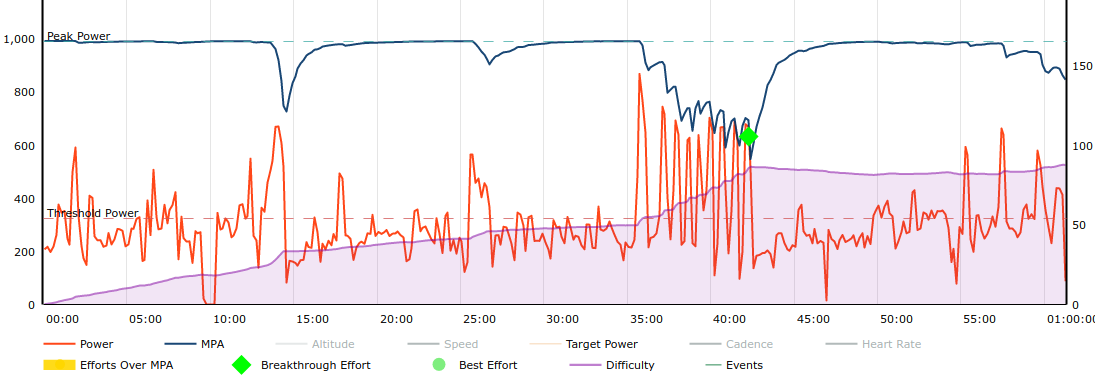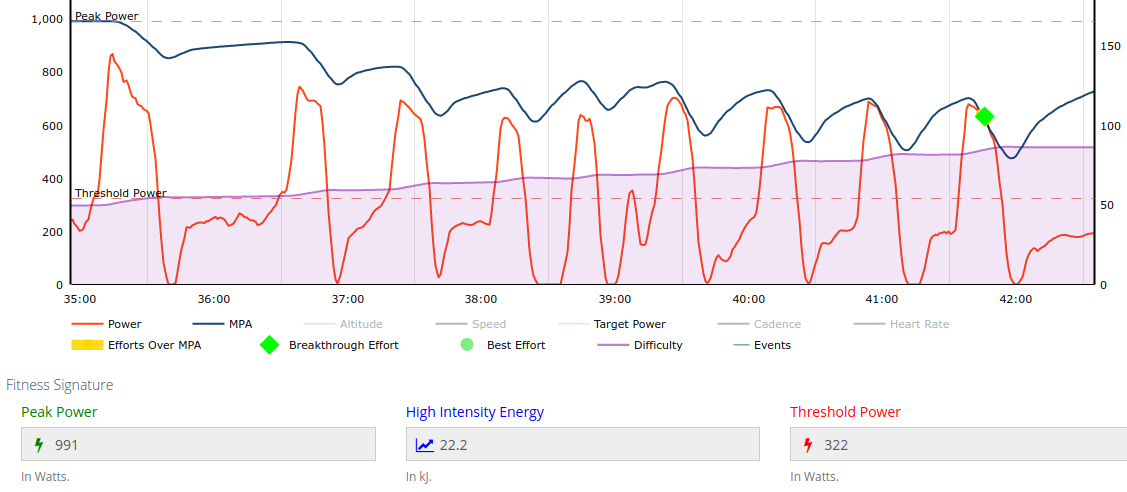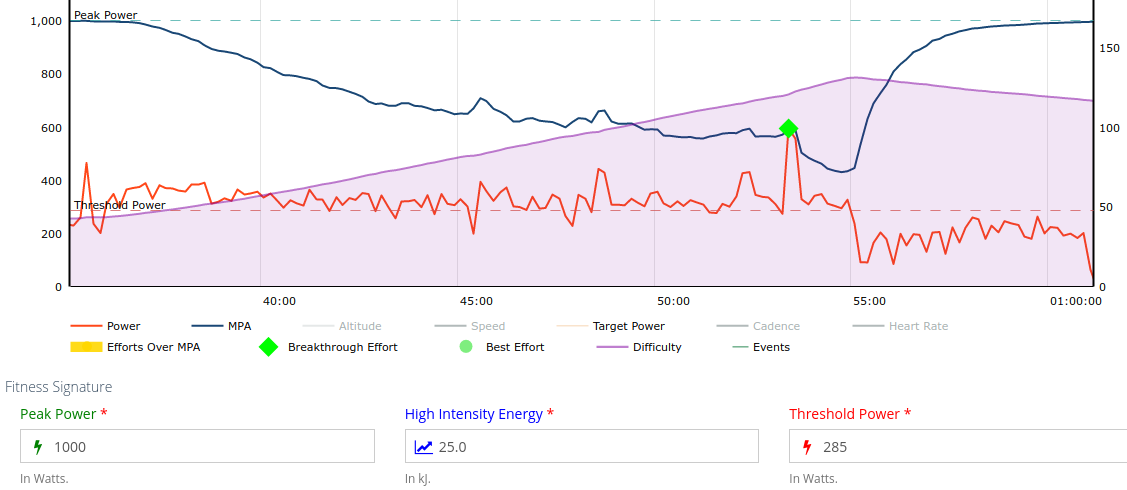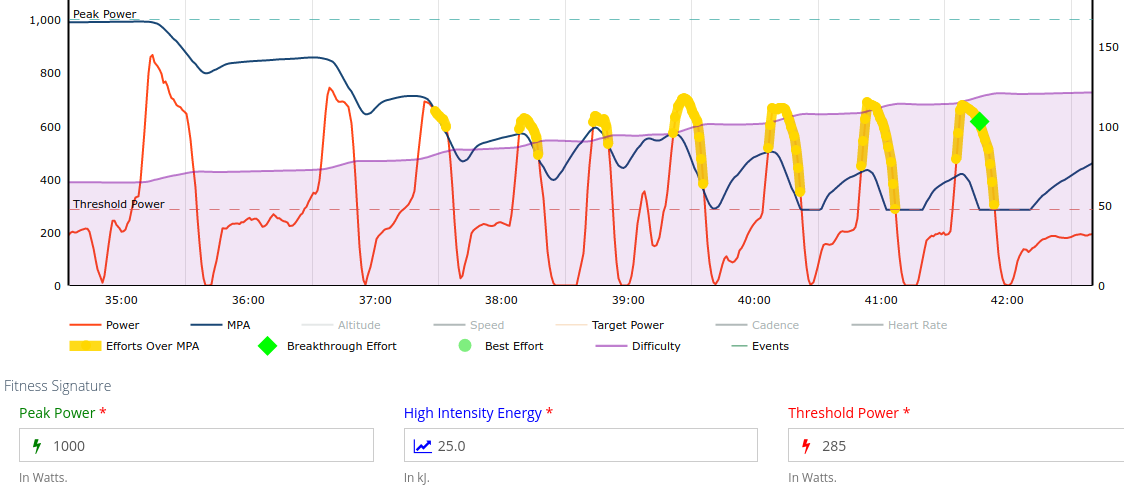My Experience with Xert
Shortly after I got my power meter last June, I signed up with the online cycling training platform Xert.
The ideas behind it are interesting, and promising:
Firstly, a software-based adviser that recommends workouts based on your current training status. Tired or fresh? Building or peaking? The recommendations will vary based on your current situation. And if you're targeting a road race you'll get different advice than if you were peaking for a criterium. If you miss a couple of days training, it will seamlessly adapt its recommendations, as there is no 'plan' as such. If you're feeling fresh and energetic, you can increase your ramp rate to 'aggressive' and Xert will adjust. If you're tired, select 'taper' or 'maintenance' and it will slow down.
Secondly, the automatic generation of your power profile, without any need for specific testing. This uses the power data from your rides to estimate your abilities. The only requirement is that you regularly perform maximal efforts (intervals, group rides, races). From this Xert will gather information about you, summarized with the key parameters Peak Power, High-Intensity Energy and Threshold Power. And from that they give you the familiar power curve 'fitness signature', which tells you your current abilities from 1 second out to 5 hours (even if you haven't done a maximal effort at most durations). Your progress is tracked over time, so you can see how things are going, and what works and what doesn't work for you.
The key to the fitness signature is the 'breakthrough': when you perform in excess of what Xert's model regards as your maximum. For instance, if I have a predicted maximum of 800 Watts for 20 seconds, and I go out and hit 814 W, this will generate a breakthrough and Xert will update one or more of the parameters (in this case this would definitely include High-Intensity Energy and possibly also Peak Power, but not Threshold Power).
They also have a fairly extensive selection of workouts, which can be loaded onto your smart trainer (should you have one), and for Garmin users they have an app which provides useful information live during a ride, such as carbohydrate and fat consumed and current maximal energy available.
It all sounds great, and for $10 per month seems like decent value. I used it for about six months, but recently cancelled. Here's why.
I wasn't interested in the training adviser, other than as a curiosity, but here is an overview.
In practice, the adviser will default to either: a) recommending an intervals ride with progressively decreasing interval durations depending how far out from your next scheduled event you are, and what you set your 'athlete type' to. So for instance, if you're targeting a road race two months from now and you are a punchy type cyclist, you might set your athlete type to 'breakaway specialist'. This would mean that the recommended training would start out as mostly endurance, then progress to intervals of gradually decreasing duration (20 minute, 10 minute, 8 minute, 5 minute) until they matched the athlete type as you reach the peaking phase; b) if you're judged by Xert to be too tired for a high-intensity ride, it will recommend an endurance or recovery ride. There are multiple rides to choose from in each category, but that's basically it. Very straightforward.
The other side is the fitness signature. This obviously has great appeal: doing specific threshold tests every few weeks is arduous, and even if you do them they don't track changes in between and only cover the specific durations that you test; the rest of the curve is extrapolation. Xert promises a continually-updated fitness signature without the need for specific testing. The problem was that my fitness signature provided by Xert became wildly inaccurate.
I'd been growing increasingly suspicious of the numbers for some time, but as detailed elsewhere, I'd been greatly overdoing my training for just about the whole period in question, so I just put the discrepancy down to fatigue. Eventually though, something had to give, as attempting to use the fitness signature to set training zones led to failed workouts.
At the end of the season when I'd finally accepted I'd been chronically overreaching, I backed off for a couple of weeks, freshened up, and went out for a fun ride for a couple of hours, just doing random efforts. I threw in a set of my favourite intervals: a warm-up culminating in a 20-second neuromuscular effort with 1 minute recovery, followed by 6 reps of 15 seconds full gas, 30 seconds recovery (I actually got interrupted on the third and fourth reps, so ended up doing 8). These are the intervals that always gave me breakthroughs on Xert, and sure enough I got another on that day too.

Above is a screenshot of the ride, which gives you an idea of how Xert works. It has values for my Peak Power, Maximal Power Availability (MPA; a dynamic value that changes during a ride based on fatigue) and Threshold Power (FTP). At first, your MPA is equal to your Peak Power, but efforts greater than your Threshold Power cause your MPA to decrease at a rate that varies between individuals due to differences in high-intensity energy (also known as anaerobic work capacity, or W').
You can see I did a couple of these efforts earlier in the ride (at around 14 and 26 minutes), but because I backed off afterwards my MPA returned to its initial value. Now we'll zoom in on the set of sprint repeats:

I started with a 20-second effort, then about 1 minute later I started the repeats, during which my MPA gradually declined, until during the last repeat it dropped lower than the power I actually generated. This gave me a breakthrough. Down at the bottom you can see my numbers following this ride: Peak Power 991 Watts, High Intensity Energy 22.2 kJ and Threshold Power 322 Watts. Those are the numbers of a 'slow-twitcher', which itself was a red flag for me, but those are what the model produced, so let's just go with them for now.
As I've said, I was suspicious. So four days later, once I was nice and fresh again, I went back out and did a 20-minute maximal effort to see what I really could do on a longer, continual interval. According to Xert my FTP was in the 320s so I should have been able to get around 340 W for 20 minutes. I buried myself and got 301 W (obviously nowhere near a breakthrough), which at best would put my FTP in the 280s. I cancelled later that day.
Afterwards, Xert sent me a cancellation note asking if I had any feedback, so I wrote back and explained my concerns. The response seemed to imply that I just wasn't trying hard enough on the 20-minute effort, but after I insisted that I really was giving it everything (my average HR was 5 bpm above my threshold HR and perceived exertion was through the roof), they adjusted the numbers: dropping my Threshold Power down from 321 W to 285 W and increasing my High Intensity Energy from 22.3 kJ to 25 kJ. This is shown in the next figure:

According to Xert, those numbers match my performance on the 20-minute threshold ride (where it now shows me getting a breakthrough during a surge I did near the end of the effort, as you can see above). But the problem is, if you go back and plug these new numbers into my intervals ride from four days earlier, you get this:

My efforts on the sprint repeats are far greater than I should have been able to do given these new parameters. In other words, I broke their model.
It seems that Xert isn't properly accounting for recovery between reps on short repeat intervals. There's a lot of cool biochemistry going on here involving depletion and repletion of the phosphagen energy system, which I suspect Xert isn't properly modelling. The only other plausible explanation is that I just wasn't trying on the 20-minute interval. That's what Xert hinted at (and I've noticed them doing this with other clients on their help forum), but I can assure you that it isn't the case.
For what it's worth, I think the revised numbers are far closer to reality than the original ones; as much as I'd love my FTP to climb upwards of 320 W, that's just not happened (at least, not yet!). The revised power curve derived from these numbers does match quite closely my actual best efforts. But even so, Xert isn't any use to me because as soon as I do a repeat-type intervals ride, the numbers will be overridden due to Xert's inability to handle this type of workout.
So that was my experience with Xert. Maybe they'll improve things later on, or maybe it really is my own fault. Either way, it's not for me at the moment.
They offer a 30-day free premium trial, so if you have a power meter it's worth giving it a go. Let me know if you have better results than I did.